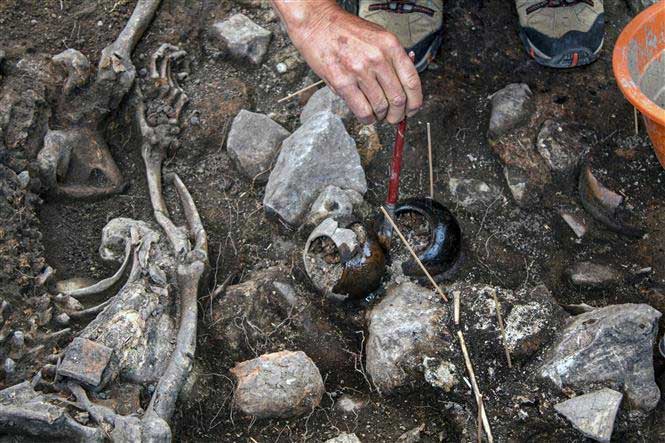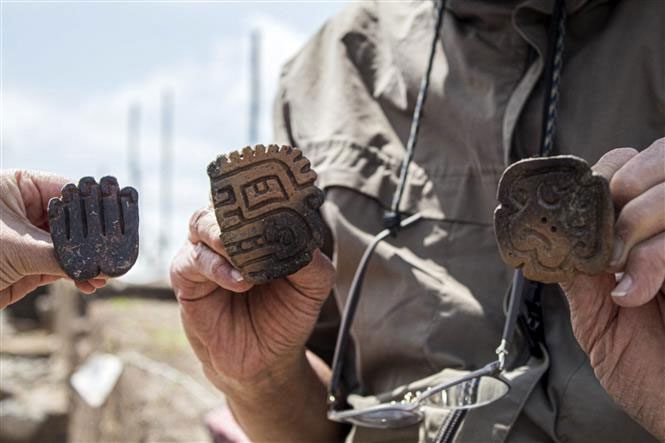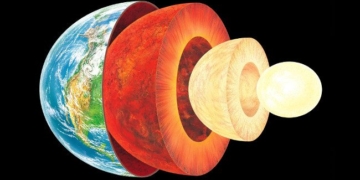Archaeologists have recently unearthed an ancient tomb in northern Peru that may date back approximately 3,000 years and is believed to belong to a religious figure.
The Ministry of Culture of Peru announced that the remains buried in the tomb have been named “Priest of the Pacoampadi Region” – the highland area where the tomb was discovered.

Archaeologist excavating the 3,000-year-old tomb at Pacopampa in Cajamarca, northeastern Peru (photo published by the Ministry of Culture of Peru on August 27, 2023). (Photo: AFP/TTXVN).
The priest was buried under six layers of ash mixed with dark soil, along with numerous decorative ceramic bowls and ancient ceremonial ornamental seals used for individuals of high social status.
Scientists also discovered two special seals along the upper edge of the tomb. One seal resembles a human face facing east, while the other features a jaguar and faces west.
Project leader archaeologist Yuji Seki stated that this ancient tomb is of an “unusually large” size, measuring nearly 2 meters in diameter and 1 meter in depth. Additionally, the burial position of the body is quite unique, lying face down with the feet crossed.
On the remains, archaeologists also found a tupu – a large pin used by Indigenous people in the Andes Mountains to fasten cloaks. However, tupus are typically used by women.
According to archaeologist Seki, although the individual buried in the tomb is male, the artifacts associated with him are very special, suggesting he may have been a leader during his time.


Artifacts found inside the ancient tomb at Pacopampa in Cajamarca, northeastern Peru, on August 27, 2023. (Photo: AFP/TTXVN).
According to the Ministry of Culture of Peru, the examination results of the stone layers of the tomb indicate that this priest may have been buried around 1200 BC. This newly excavated tomb is part of the Pacoampa archaeological project that has been ongoing in the area since 2005.


















































